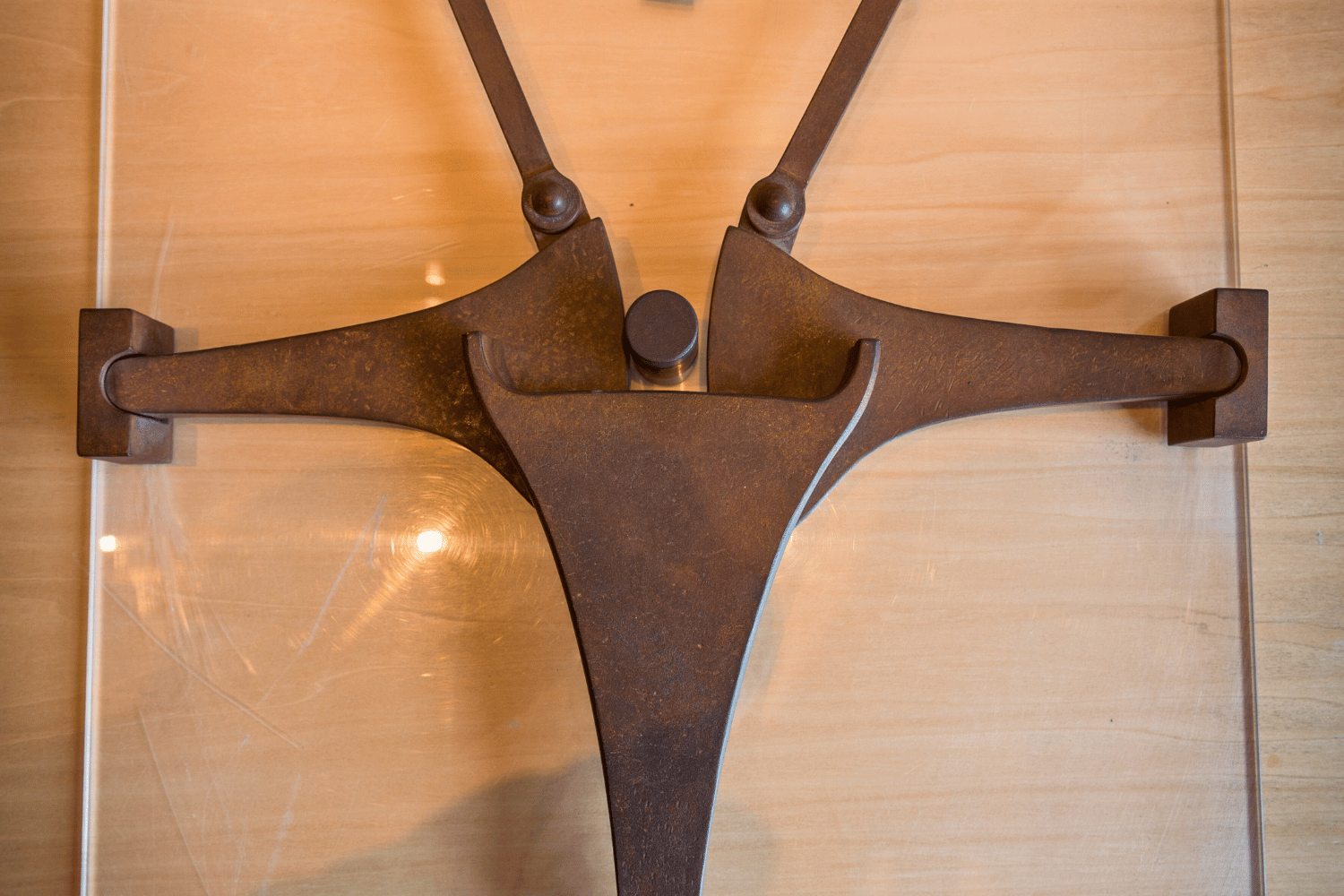In order to support bells and cause them to swing, Leonardo conceived of a special apparatus capable of reducing friction by a considerable amount. The solution he proposed resembles, in an incredible way, the anti-friction device still in use for the large bell at the Cathedral of Saint-Etienne in Metz, France, called “La Mutte.”
This device, reconstructed here in a 1:2 scale, consists of a robust triangular iron support, supported at right and left by two members having the form of sectors of a circle. In the center is a small cylinder representing the axle on which the bell rests. When the bell swings to chime, the axle rolls, instead of sliding, on the supports, setting them in motion. How, though, can we explain this astonishing resemblance? Probably Leonardo collected some information on the bell at Metz and used it as a point of departure for his own studies on friction. His recorded works provide testimony of how technical knowledge at that time circulated all throughout Europe.
Technical informations
Type of exhibit
Model
Collection
Material
Iron
Measures
Width: 54 cm; Height: 57 cm; Depth: 5 cm.
Storage location
Relationship with the original work
Source: Leonardo da Vinci, Codex Atlanticus, f. 1086 r
Location
Museo Leonardiano, Counts Guidi's castle, ground floor
